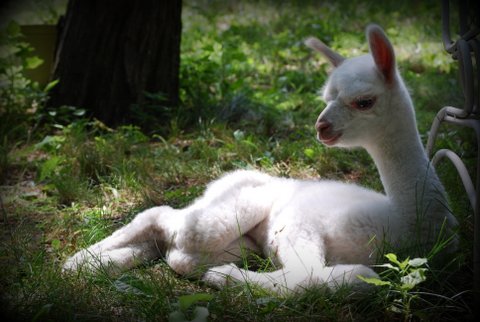|
ALPACA FACTS
- Alpacas are part of the Camelidae family, which also includes llamas, guanacos, and vicunas from South America
- Alpacas have some of the finest most versatile fiber found in nature….”described as stronger than mohair, finer than cashmere, smoother than silk, softer than cotton, warmer than goose down, and better-breathing than thermal knits.” Alpaca fiber was reserved for the elite and nobility

- Alpacas were domesticated by the Incas more than 6,000 years ago.
- Alpaca fiber “is much like sheep’s wool, but warmer and not itchy. It is lacking lanolin, which makes it hypoallergenic and also allows it to be processed without the need for high temperatures or harsh chemicals in washing.”
- Alpaca fleece is flame-resistant, “meeting the standards of the U.S. Consumer Product Safety Commission’s rigid testing specifications as a Class 1 fiber for use in clothing and furnishings.”
- Alpaca fleece is water resistant and can “wick away moisture because of its unique ability to mimic cotton in moisture regain. These attributes are what make alpaca feel lighter than wool, but warmer than cotton in cool and damp climates.”
- Alpaca fleece “comes in 16 tones that are recognized by the textile industry, from white to light rose gray to dark fawn, in addition to the blends that can be made from those, thus minimizing the processing.
- There are two types of alpacas in the world: Suri, pronounced (SOO-rees) and Huacaya, pronounced (wah-KI-ah). Most of the alpacas in North America are Huacayas.
- Alpacas hum to communicate, “which has been described as a kind of musical purring”.
**quotes from author, Melissa Breyer from Mother Nature Network
|
